
In the 5th century, the Roman emperor Constantine I was called Christos, the Christ. This visionary megalomaniac has absolute power over almost the entire known world. With a few sesterces, he covers Europe with temples dedicated to his worship. In the plausible hypothesis where Jesus was not a real historic person, Constantine alone founded Christianity.
The contradictory exegesis exposed in this article is mainly due to the in-depth research conducted by a renowned academic, specialist of Christian apocryphal literatures.
Member of the C.N.R.S – E.P.H.E., La Sorbonne 5th section, Jean-Claude PICARD (1943-1996) died prematurely following a painful illness …or in any other way on which we will not dwell.
Texts in italics are taken from his “Histoire critique du christianisme romain”“Critical History of Roman Christianity” (source)http://srg.hereses.chez-alice.fr/.
XP Constantinus
Emperor Constantinus306-337 after his victory at the Battle of Milvian Bridge over Maxence in 3121065 AUC, ab urbe condita, after the founding of Rome completely changed the face of the Roman Empire. Following his victory, he affixes on the shield of his legionnaires his new symbol, Chrism, formed by the two Greek letters Khi (X) and Rho (P), the initials of the word Christos, meaning ‘anointed of God’, ‘who has received the holy unction of God’. Subsequently, the chrism became the symbol of the Roman legions.
In 3131066 AUC Constantine promulgated the Edict of Milan, allowing freedom of worship to all citizens of the Empire. Our Christians, the enemies of the Empire, can now freely practice their assemblies and the translations of the Septuagint into Latin are multiplying. Constantine, by advocating harmony in the Empire around the one god, thus silenced all seditions. In 3211074 AUC Constantine imposes the Sunday rest, under the name “Venerable Day of the Sun”.
Sol Invictus was therefore still the cult of the Empire…” (J-Cl Picard, loc.cit)
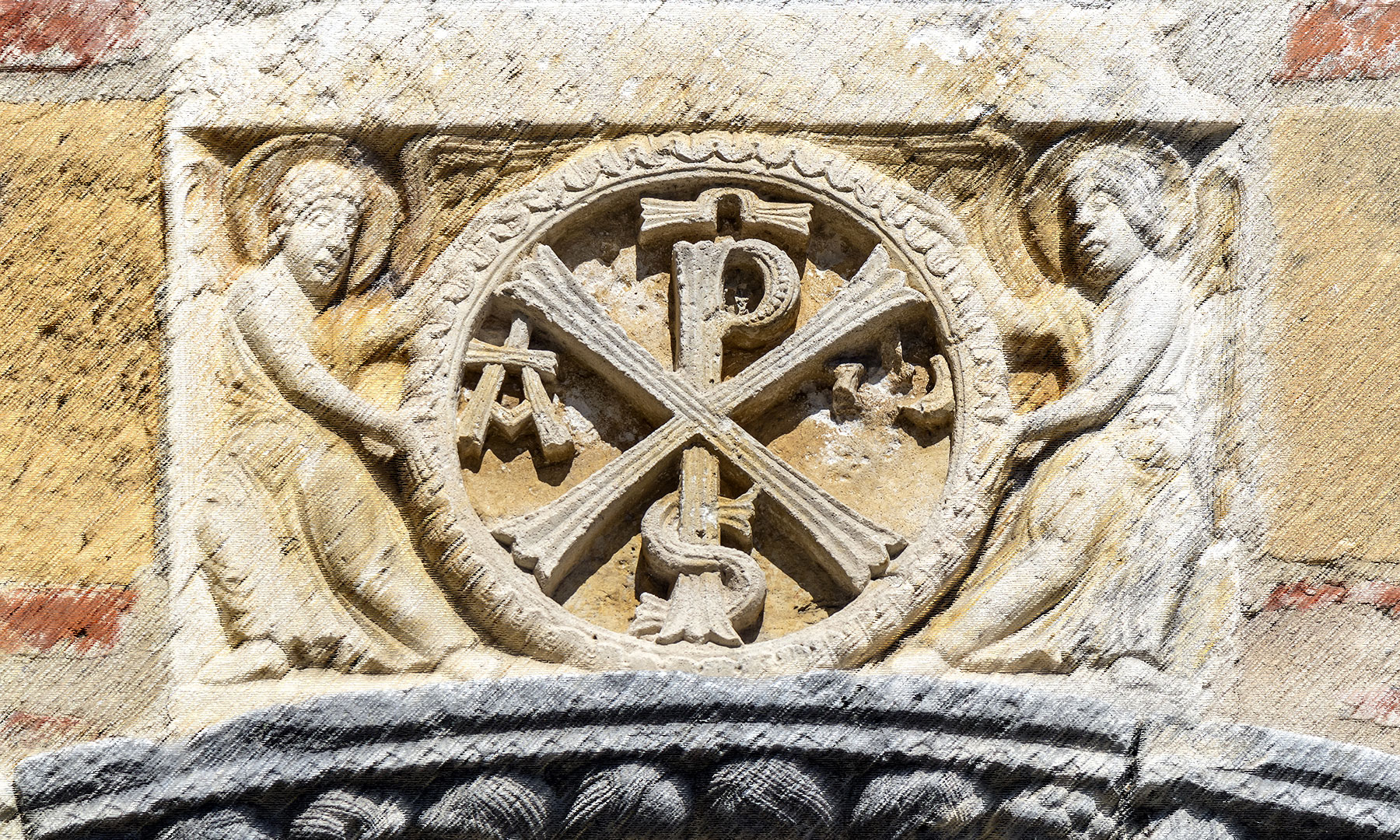
The Chrisme XP
When I look at this thing, the chrism, it’s not the letters that strike me. Immediately the drawing tells me something. For me it is very clear. No symbol to decipher, everything is shown. It represents something that existed, that was there at the beginning and that will come back at the end of the match. A sign that is very easy to read when you know where to look. The message is readable, unequivocal, without X to say Christ, only solid. Only facts.
The design evokes the Celtic cross. The real one, which could be even older. The one that has all four branches of the same length. In my opinion it goes back to the origin of this humanity, fifth of the name. Or sixth according to some? It does not evoke death, this one. We search in vain for the tortured. It will not appear until the Middle Ages, when the lower branch was lengthened to make it the cross of torture. Embarrassing prospect. There were crosses at every crossroads in Europe.
The Origin of the Cross
The cross is also well anterior to Jesus, it is even older than crypto-Christianity — I am not talking about the catacombs in Roman times, but about a religion of enlightenment, that of Christ Aessus, who is called Mithra in the East and whom the Bretons identified with Saint Yves. In my opinion, it goes back to the edge of this humanity, fifth of the name — or sixth according to some?
The cross is that of the origin.
I see the partition in equal quarters of the island of Atlantis which is circular, or the mothership Hyperborea Nibiru, also circular.
Seen from above, this vessel or this artificial island revealed the cross formed by four rivers, yes, the four rivers of Eden. These rivers flowed from a high mountain that the Greeks named Olympus, but which is not Mount Olympus, belatedly renamed, when the Greeks had forgotten everything. What according to Plato sometimes happens to them. (read more)
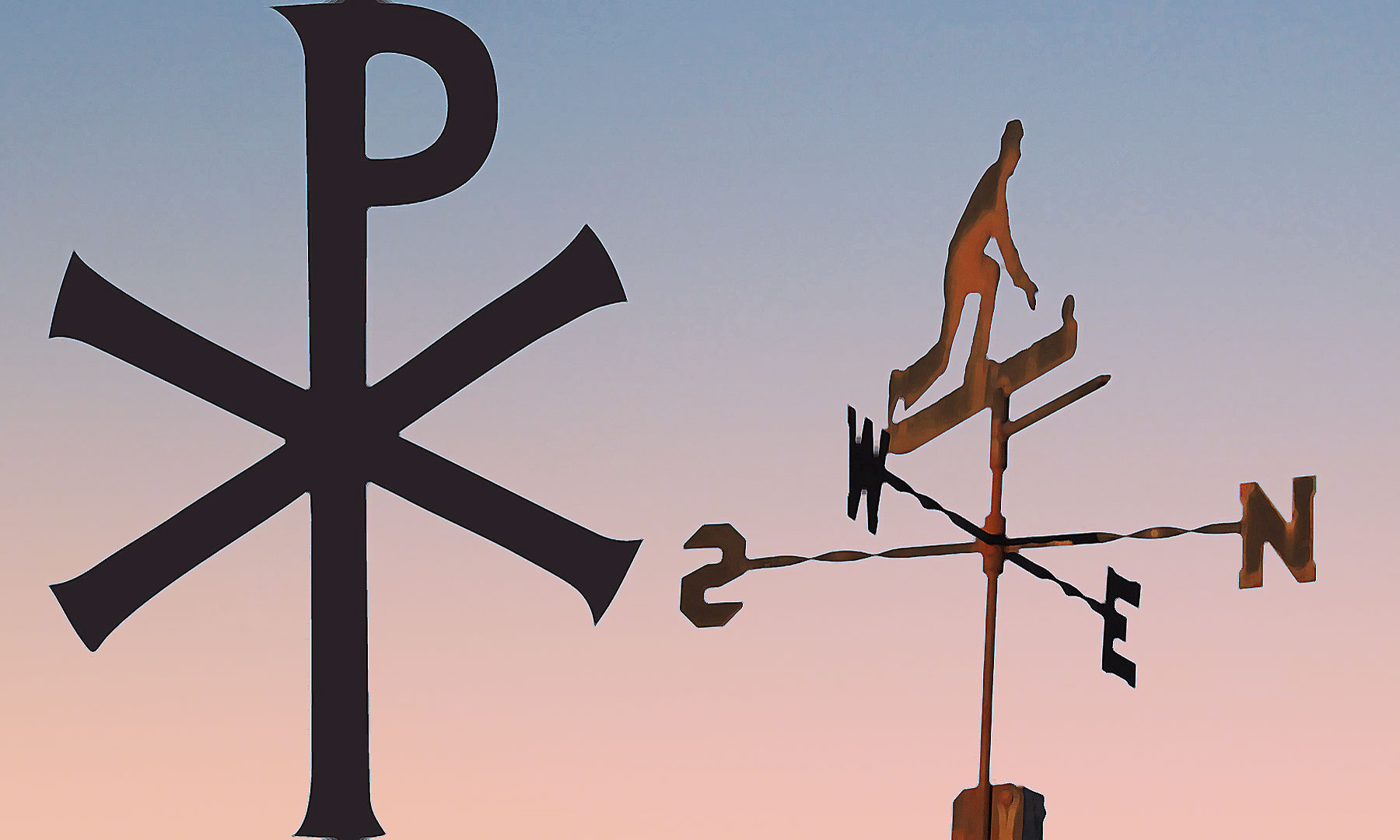
The Era of Heroes
The religion of the Unconquered Sun relied on tangible facts during the previous era, the Age of Heroes. The heroes in question were all heirs of the former gods, supermen belonging to previous humanity, black giants measuring 4.50m.
The Patriarchs, the Heroes, the giants, the gods, all these names designate the different overdeveloped races of very ancient times. Supermen endowed with all talents, all powers, all knowledge.
That is why ancient mythologies abound with gods and goddesses, not only Greek mythology, but also Hindu, Aztec, Mayan, Inca, Inuit, or Dogon mythologies.
And even the Hebrew mythology. Indeed, the creator god of Genesis is not a single god, oh no. He is even very numerous.. The original texts name it Elohim, that is to say “those who came from heaven”. Because the gods had very advanced technology: they used planes and rockets. They knew how to go to the stars and return to earth. And they had domesticated lightning, which was an instrument of awakening before becoming their favorite weapon. They also knew how to leave the doubt about their mortal nature, and human as ours, although of a superior condition. (read more)
Sol Invictus
In 324 Constantine sets up his capital in the East in the city of Byzantium, and renames it Constantinople. In 325 takes place the council of Nicaea.
According to Tradition, at the end of this council, Constantine and his new churchéglise in french (from Latin ecclesia = assembly) assimilated the monotheistic principles of the Manichaeans and Christians to the cult of Sol Invictus and created the new religion (from Latin religio = respect, worship, veneration) of Christ-Emperor, son of the only god.
“The Christian religion became Christianized and thus became the Greek religion, O Christianismos, that is to say, the cult of Constantine, the only representative of the One God in his Empire in the process of unification.
It reminded scholars of the worship of Alexander the Great. (J-Cl Picard, loc.cit)
In fact, the Council of Nicaea,
that is to say the assembly of the Emperor,
established the new official dogma of the empire:
the cult of Christ-Emperor as a replacement for Sol Invictus.

Houses of the Emperor
Emperor, in Greek, is called basileus. This word gave rise to basilicas in French. Now it turns out that the oldest Christian constructions are precisely called basilicas, houses of the emperor…
The construction of basilicas, the houses of the Emperor dedicated to Christ, but also serving as courts, places of commerce, promenades, assemblies, etc., are increasing throughout the Empire. A curiosity is to be noted: “Eusebius of Caesarea, by his ‘Life of Constantine,’ contributed greatly to the deification of this one:
Until the end of the 12th century, Constantine was honored by the faithful as the founder of the Catholic Church.
Many Romanesque churches, in Poitou Charente, Alpes de Provence etc., above their porches, where the crowds circulated, have imposing equestrian statues called “Constantin”. Constantine would therefore be honored by the Christian Church for nearly 800 years! Doesn’t it seem rather obvious that the Romanesque churches were dedicated to Constantine because they were built in his time ?” (source)“Histoire critique du christianisme romain” http://srg.hereses.chez-alice.fr/.
Indeed, it is common sense.

Which Jesus?
The existence of Jesus is not only compromised by the historical Christ, the emperor Constantine, but also by the great fantasy of the gospels, completely implausible. According to and falsified by people with only a very vague knowledge of the 1st century AD.
The monthly magazine “Prions en Église”, widely distributed in parishes, devoted a whole pagepage 10 to the reading of the Bible in its issue 107 of November 1995 and declared well before Mr. QUESNEL that the Evangelists had not wanted to work as an archaeologist or historian. The Bible was written, these editors say, by believers for believers; it is a Holy History. Literally, a Holy History is a hagiography, of which we find the best definition under the pen of Mgr.DUCHESNE in his “Church in the 6th century”page 127 about the Liber Pontificalis:
“a strange mix of information from good sources, legends and various fantasies”
The Gospels would therefore have the purpose of making a pre-existing Faith in the Savior more vivid, without anyone informing us about the nature of this Faith, the ways and means to obtain it
It is however confirmed that the word “reason” remains totally excluded from Christian vocabulary, if one observes these scenes of the supposed Passion of Christ the King, completely unrealistic, set in a Jerusalem such as it has never existed, occupied by Romans whose penal code is not even respected, scenes whose veracity is never attested to except by a single witness, the author-inventor, himself very posterior to the mentioned period… and completely ignorant of what it really was.
Fomenko and Recentism
This statement by a courageous historian is in line with Fomenko’s thesis, the recentism.
According to Fomenko, the Middle Ages as we know has never existed.
It was made in the thirteenth centuryIn the current falsified comput, it is the thirteenth century AUC – ab urbe condita – ie after the founding of Rome. In fact it only happens three centuries after Constantine and the construction of cathedrals. in Avignon by the Roman legates to justify a more important invention they had to do: inventing a religion.
Why the hell do such a thing? I explained it above, but the question is important. A terrible plague had ruined Europe.
The survivors were only a handful, the central power totally disorganized had to face a first emergency: to discipline a little all those barbarian Mad Max who ransacked, pillaged, raped, burned what remained of humans in the landscape.
Rome still had money and material power, but its spiritual and moral power had almost completely disintegrated. The hundreds of temples dedicated to Constantine could no longer be used for anything: for lack of an emperor to honor, they had become hideouts for brigands.
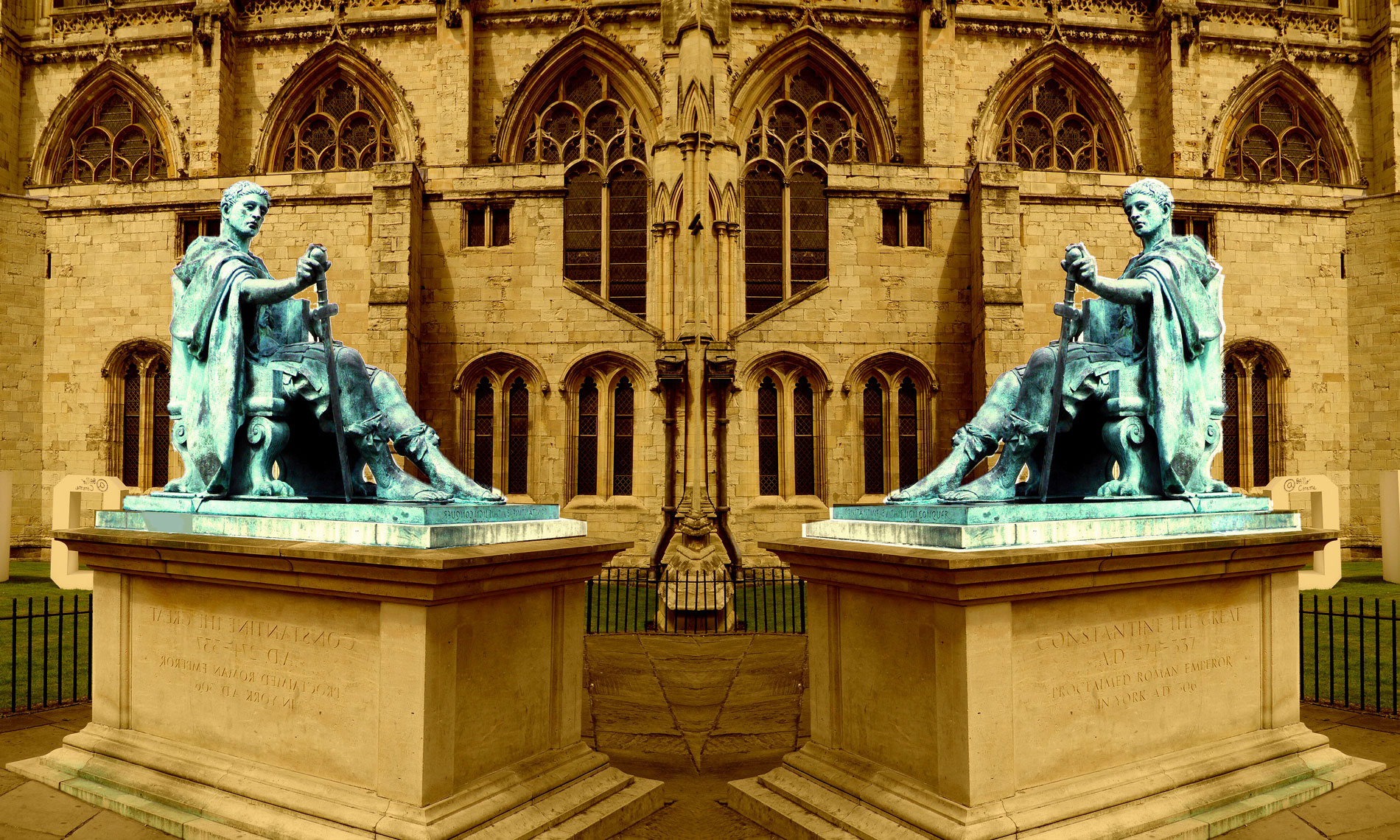
The Christ Emperor
The religion invented by the Christ-Emperor could no longer seduce these thieves and hangers, heaps of good at nothing returned from everything. So to save what remained of the Empire from a certain disappearance, it was urgent to rely on love, gentleness, forgiveness, generosity, hope, charity, the certainty of a better world after this hell on earth that Europe had become. That’s why the Roman legates invented the baby Jesus.
Invented, incidentally, that’s saying a lot…
The composers of Christianity took over many elements of Mithraism, the ancient religion of Mithra; and many elements of Judaism, the expectation of the Messiah, the parables of Enoch; a little of the mysteries of Isis, the redemption by the divine grace; a little of Sol Invictus, the former official religion inaugurated in Rome by Heliogabalus and taken over by Constantine.
The fathers of the church have handled all this with intelligence, and told us the beautiful story of a savior who would have come among the distant Jews seven centuries ago.
Si non e vero e bene trovate … If that’s not true, it’s well found!
I walk on the path which is no longer the path but the walk.
Lanleff
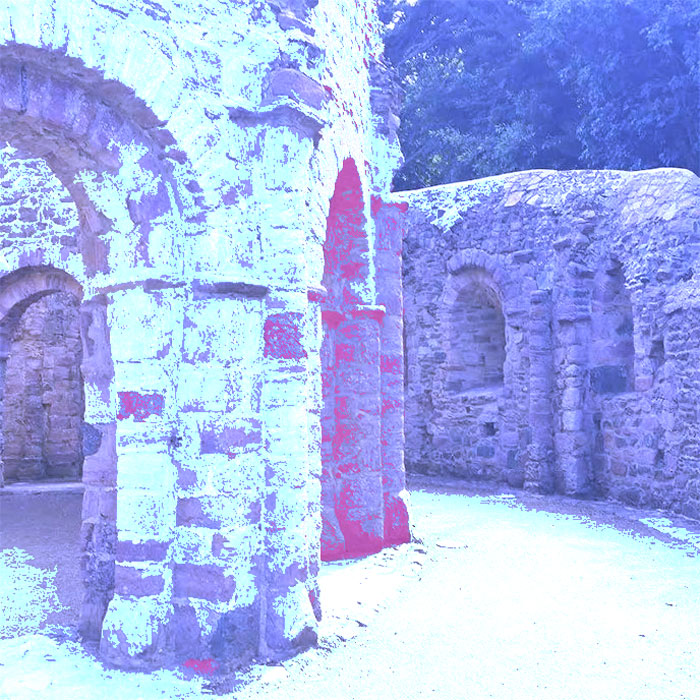
There exists in Brittany, in the Côtes d’Armor, a charming village called Lanleff. There is a curious temple, attributed to the Romans. Circular in shape with massive pillars, semi-circular arches and a gallery that was covered, this building is reminiscent of Roman architecture. It is said that this temple was not dedicated to a Roman god, but to Mithra. On one of the pillars, a very worn bas-relief suggests a young boy who might well be Mithra.
Imagine that in this same village, in other times, the father of the emperor Constantine would have been in garrison. Would this small temple on which historians dry themselves be the missing link between Roman art and Romanesque art? Everything is possible in Celtic land, sacred land. And Armorica is my garden.
Thus therefore
Everyone will have their beliefs, and the sacred cows will be well guarded. Our ancestors ate everything. They swallowed snakes with the ease of a snake charmer. It was to be counted without the web, without the global dissemination of all the texts once enclosed in libraries strictly protected by the Holy See. Let’s not forget that until the invention of typography around 1440, all writings were copied by copyists. Monks, most often. They copied in their convent what the superior told them to copy, omitting and adding what he indicated to them. The control of the Catholic church has been almost total during all this time.
A host of bogus anecdotes, full of errors and anachronisms, was added by the copyists. That this does not prevent believers from believing, nor unbelievers from not believing. I am a mythologist, I take a critical look at all mythologies: is it true? Is it distorted? Is it exaggerated? For what reasons? My work has no other goal than to face the truth — if such a thing exists! — with a critical eye and the mind rid of all preconceived ideas. It is for this reason that many of you read me. You know that your convictions belong to you. They help you to live, far from me the idea of dynamiting them, from the ancient Greek dunamos, which means angel.
All beliefs deserve respect. For me, I align myself with the eternal principle of uncertainty:
Before the eternal lie, it is good to believe without believing.
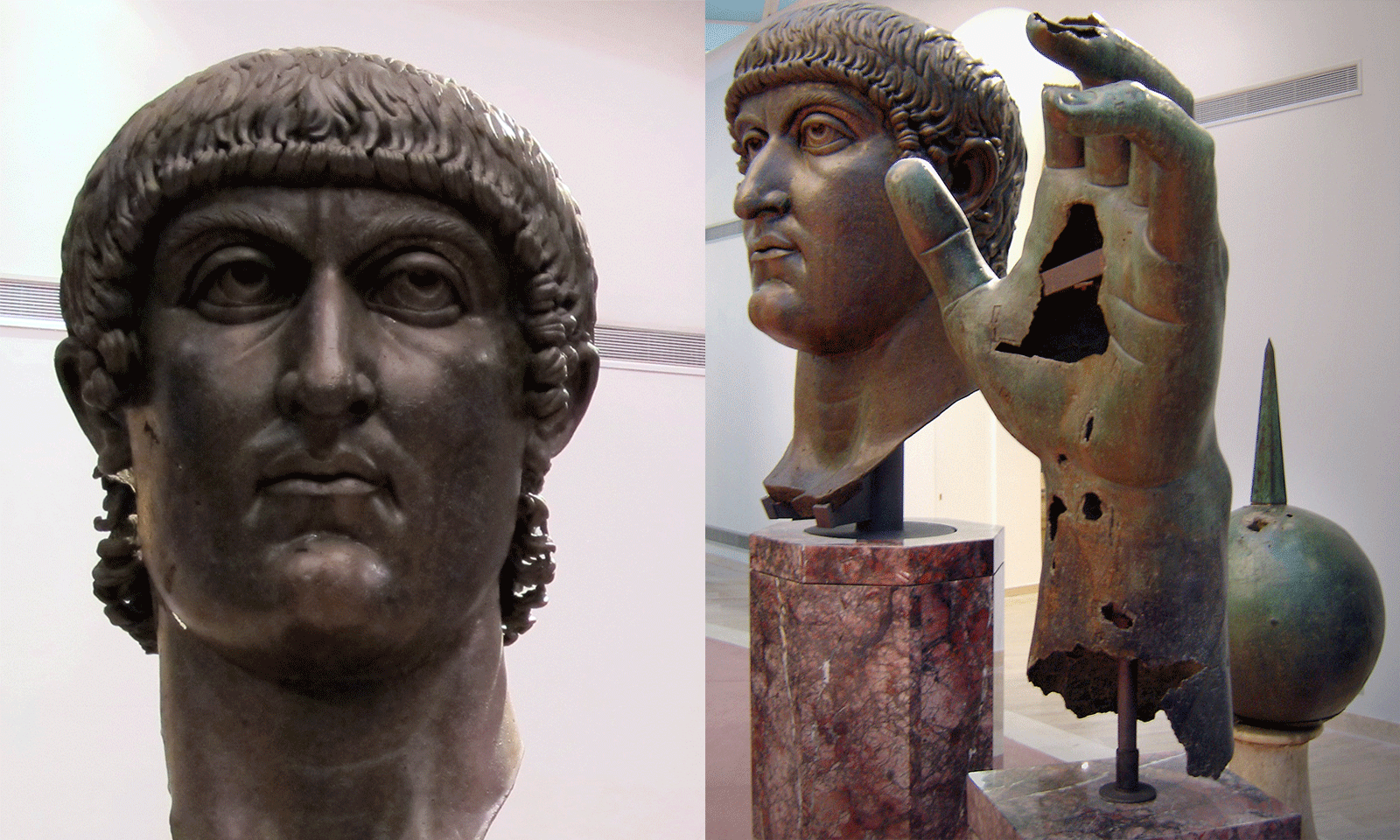
By Way of Conclusion
The bronze colossus of Constantine, several fragments of which are preserved in the Capitoline Museums, in Rome, was a colossal statue in bronze, originally ten to twelve meters high, made in the 4th century and depicting a Roman emperor of the Constantinian dynasty generally identified with Constantine I. (source)
The statue was supposed to measure about ten or even a dozen meters before its dismantling. According to medieval sources, it was initially wearing a rayed crown and held a globe in one hand and a sword in the other. (source)
The rayed crown is that of Sol Invictus, Sun Unconquered, whose emperor was the Christ. His resounding victory over the usurper Maxence made him a conquering sun. The globe he carried in his left hand could represent our planet, and the point that surmounts it precisely at the north pole would designate the direction of the Conquering Sun itself, the wandering planet Nibiru.
I believe this globe to be the artificial planet Hyperborea.
This colossal statue should not be confused with the marble colossus of the Basilica of Maxentius,
whose fragments are also preserved in the Capitol.
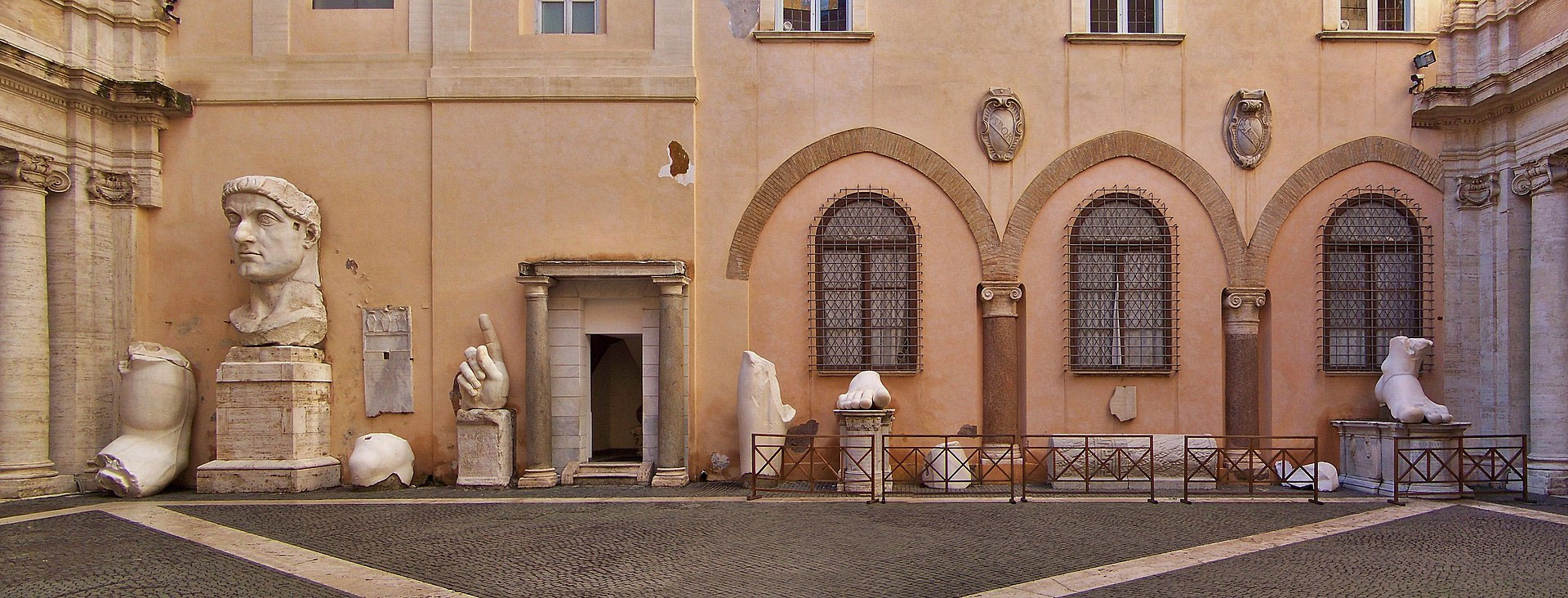
In addition to this article, be sure to read The Apotheosis of Constantine
Roman Empire
- Parallels Calendars
- Deus Ex Machina
- Previous Lives ?
- The Reign Of Rome
- Caesar’s Calendar
- The Apotheosis of Constantine
Sons of the Sun
Sol Invictus
- The Great Northern Sun
- Sons of the Sun
- The Fifth Sun Of The Maya
- Mitra the Elder
- Phaeton Son Of The Sun
- Mithras Son Of God
- Mithras Sol Invictus
- Undefeated Sun
- The End Of Taurus
- The Ivesus Songs
- Heliogabalus Silly Bouddha



